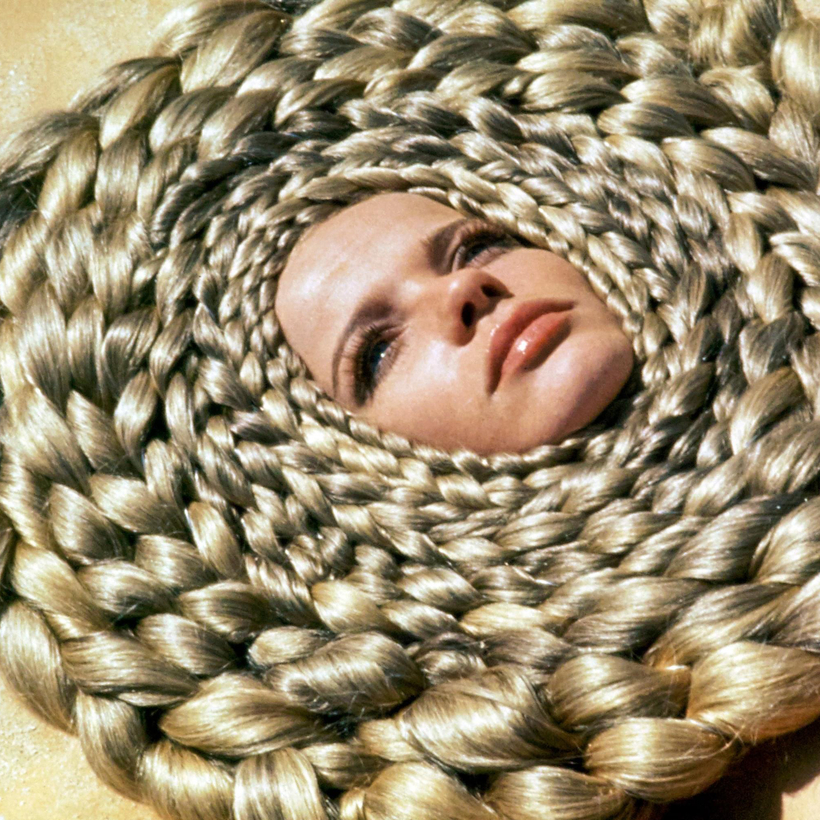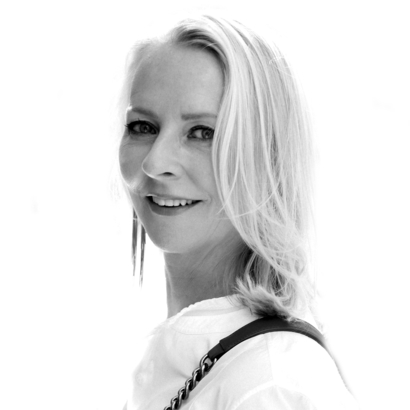Are your breasts high? Is your ponytail flush? Is there ample pep in your step? I can’t help you with all of the above—gravity is a beast, and hence the sagging of breasts and pep. But I am here to address the ponytail and its flushness. Because we are living in the golden age of hair.
Not just any hair. Virgin hair of uncommon smoothness, dip-dyed and applied with a keratin bond no bigger than a grain of rice. The result is a head of hair so abundant, you could safely call it “lush,” if not “flush.” It blows like an unfurling flag in the wind. Or, if you’re Beyoncé, it blows next to an unfurling flag. Onstage at MetLife Stadium or FedExField, you can flip your head over with abandon and find it re-settles without missing a beat. It’s also capable of resting placidly at the Harvard Business School’s Baker Library, attracting a mate 10 years your senior. It can do all this without giving itself away for what it is: a foreign object more fleeting than youth.
Extensions are on everyone everywhere. And if you don’t have them, maybe you’d like to reconsider. “I would say at least 90 percent of celebrities have extensions,” says Priscilla Valles, who is the leading extensionist (yes, that’s the term) in Los Angeles. Her clients include Dua Lipa, Bella Hadid, Hailey Bieber, Khloé Kardashian, Kim Kardashian, Kendall Jenner, Olivia Rodrigo, Katy Perry, Megan Fox, Kate Hudson, Lauren Sánchez. Did I leave anyone out? Chrissy Teigen, Miranda Kerr, Karol G, Christina Aguilera.
Not all of these luxuriant creatures are aiming for Beyoncé length. Who could possibly? Many are perfectly happy with a pop of fullness and thickness. “Extensions used to be thought of for literally what the word is, extending your hair,” says Ken Paves, a hairstylist who works with Victoria Beckham, Eva Longoria, Jessica Simpson, and, sometimes, Jennifer Lopez. “That’s not the case anymore.”
Kiss the extensions of the 2000s good-bye. Because Jessica Gillin, a hairstylist and extension expert at the Jenna Perry Salon, in New York, is ushering in the era of tasteful, discreet extensions—“micro-dosing extensions,” as she sometimes calls them.
Gillin works with models whose hair is destroyed by the constant manipulation incurred during Fashion Weeks that are really months. They get extensions to give their hair a rest and make it look thicker in the process.
Extensions are on everyone everywhere. And if you don’t have them, maybe you’d like to reconsider.
If this feels entirely alien, you may need to ask yourself, “Are you getting married? Do you want to have hot-girl summer hair?,” Paves wonders. In that case, step right up.
Imagine taking a shower and letting your hair air-dry perfectly without lifting a finger. “Every day is a good-hair day,” says Valles, who makes a line of hair extensions for Glam Seamless. She’s in awe of what these strands can do. “You can add thickness, highlights, color, dimension. It’s just the ultimate hair transformation,” she tells me. “I’m just so passionate about it.”
And “passion” is the right word. Because meaningful extensions with quality hair require ardor in the form of $2,000 to $10,000 per session. They’re luxury goods, made of virgin human hair—meaning untainted by chemical color, perming, or straightening solutions. In the words of Ariana Grande, “You like my hair? Gee, thanks, just bought it.”
These extensions last from four to eight weeks before you have to replace them. Valles was about to travel to Boston to do just that for a client in the middle of a tour whose name might be Olivia Rodrigo. She and other extension devotees could end up shelling out about $85,000 a year just on extra hair.
Those who want to cut corners can turn to hair that’s sewn onto a weft of cloth that looks like a hula skirt but with hair instead of grass. There are also pre-made extensions, such as the ones Paves sells on QVC.
Even the finest-quality clip-ons and wefts don’t look as natural as bonded extensions, as I learned the hard way. One night at a party, a friend slipped up behind me and whispered, “Your hair extension is showing.” Since that wasn’t my intention, I never wore them again.
Paves remembers being instructed by various publicists that he couldn’t breathe a word about the origin of his clients’ hair. “One time I had to sign something,” he adds. Now “it’s not taboo anymore—it doesn’t make someone less of a thespian.” Still, Valles works mostly at her clients’ houses or in her one-chair salon, where TMZ can’t pry. Many of Gillin’s clients don’t even tell those who share their bed. “Some people like to keep their beauty secrets a secret,” she says.
There’s still some embarrassment attached to inadequate hair, given its association with femininity, fertility, and youth. “At least 50 percent of women have hair loss,” says Jerry Shapiro, M.D., a professor of dermatology and the director of hair and scalp disorders at N.Y.U. Langone Health. Hormonal changes from pregnancy, birth-control pills, and the various stages of menopause are often greeted with hair loss. How nice! The coronavirus and its vaccines also increased the rates of shedding.
One of the most popular, least expensive, and simplest treatments is low-dose oral minoxidil, which has few side effects. The most notable is hypertrichosis—meaning the growth of excess hair, most alarmingly on the face—which affects 20 percent of those taking the medication. “You’re not going to turn into a werewolf,” says Roy Seidenberg, M.D., an assistant clinical professor of dermatology at N.Y.U. Langone. “But it could be more than just fuzz.”
If that sounds unappealing, there are injections of platelet-rich plasma, or P.R.P., but Shapiro saves that for a near last resort. “It’s very painful.... and it can be expensive. I usually don’t go to it until after I’ve tried other treatments.”
What doesn’t work are the popular biotin supplements and shampoos that claim to foster growth, says Seidenberg. Instead, he likes sprays that coat the hair to make it look and feel thicker temporarily even though the results aren’t terribly dramatic.
The lure of resplendent hair persists, even as some experts try alternatives. Paves, for example, created a short, full hairstyle for a Disney character named Periwinkle, giving her “all the magic that the other longer-haired characters had.” And while that’s commendable, it’s hard to see the boom in extensions as a sign of anything other than a capitulation to traditional beauty standards.
As Valles says, “We’re living in a world where everything is more: teeth are whiter, skin is tanner, hair is thicker.” Acquiring more and showing off your acquisitions to the world—all it takes is time and money.
Linda Wells is the Editor at Air Mail Look


